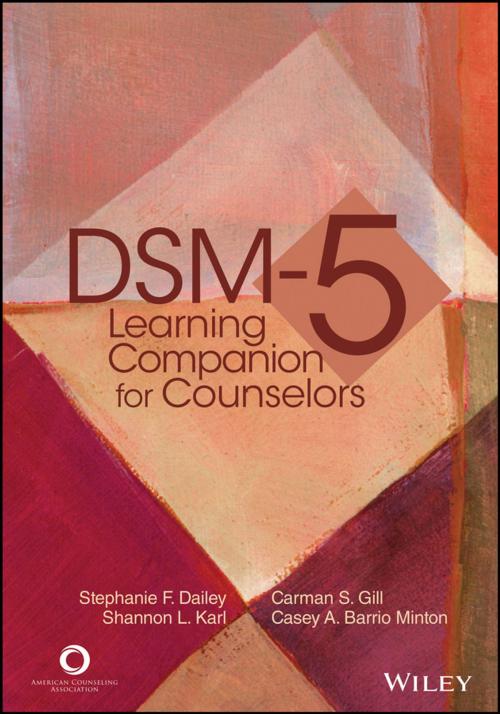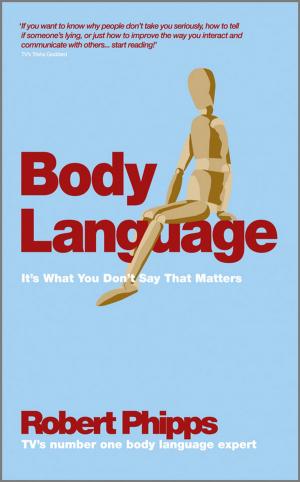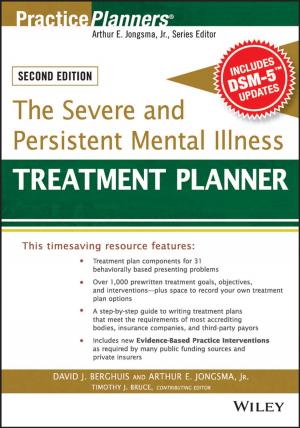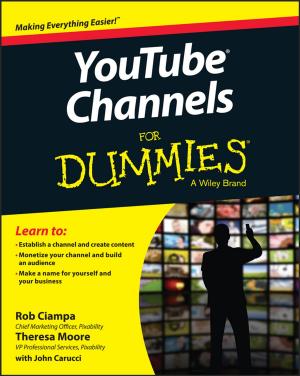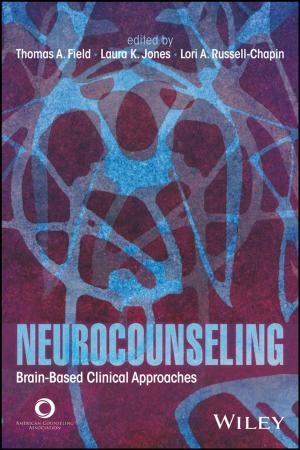| Author: | Stephanie F. Dailey, Carmen S. Gill, Shannon L. Karl, Casey A. Barrio Minton | ISBN: | 9781119019220 |
| Publisher: | Wiley | Publication: | November 3, 2014 |
| Imprint: | American Counseling Association | Language: | English |
| Author: | Stephanie F. Dailey, Carmen S. Gill, Shannon L. Karl, Casey A. Barrio Minton |
| ISBN: | 9781119019220 |
| Publisher: | Wiley |
| Publication: | November 3, 2014 |
| Imprint: | American Counseling Association |
| Language: | English |
Written for an audience that includes private practitioners; counselors working in mental health centers, psychiatric hospitals, employee assistance programs, and other community settings; as well as counselor educators and their students, this helpful guide breaks down the concepts and terminology in the DSM-5 and explains how this diagnostic tool translates to the clinical situations encountered most frequently by counselors.
After describing the major structural, philosophical, and diagnostic changes in the DSM-5, the book is organized into four parts, which are grouped by diagnostic similarity and relevance to counselors. Each chapter outlines the key concepts of each disorder, including major diagnostic changes; essential features; special considerations; differential diagnosis; coding, recording, and specifiers; and, where applicable, new or revised criteria. Clinical vignettes help both clinicians and students visualize and understand DSM-5 disorders. Author notes throughout the text assist readers in further understanding and applying new material.
*Requests for digital versions from the ACA can be found on wiley.com.
*To request print copies, please visit the ACA website here.
*Reproduction requests for material from books published by ACA should be directed to [email protected].
Written for an audience that includes private practitioners; counselors working in mental health centers, psychiatric hospitals, employee assistance programs, and other community settings; as well as counselor educators and their students, this helpful guide breaks down the concepts and terminology in the DSM-5 and explains how this diagnostic tool translates to the clinical situations encountered most frequently by counselors.
After describing the major structural, philosophical, and diagnostic changes in the DSM-5, the book is organized into four parts, which are grouped by diagnostic similarity and relevance to counselors. Each chapter outlines the key concepts of each disorder, including major diagnostic changes; essential features; special considerations; differential diagnosis; coding, recording, and specifiers; and, where applicable, new or revised criteria. Clinical vignettes help both clinicians and students visualize and understand DSM-5 disorders. Author notes throughout the text assist readers in further understanding and applying new material.
*Requests for digital versions from the ACA can be found on wiley.com.
*To request print copies, please visit the ACA website here.
*Reproduction requests for material from books published by ACA should be directed to [email protected].
